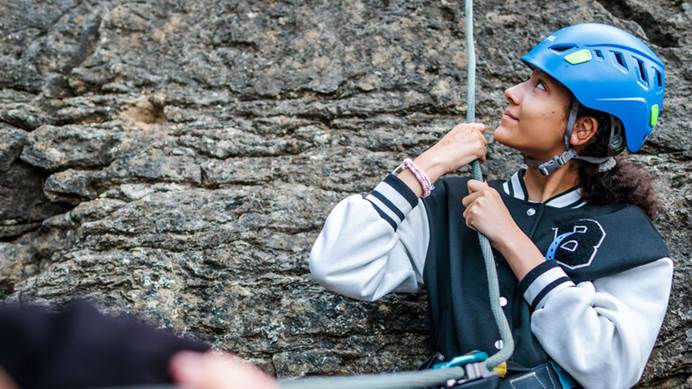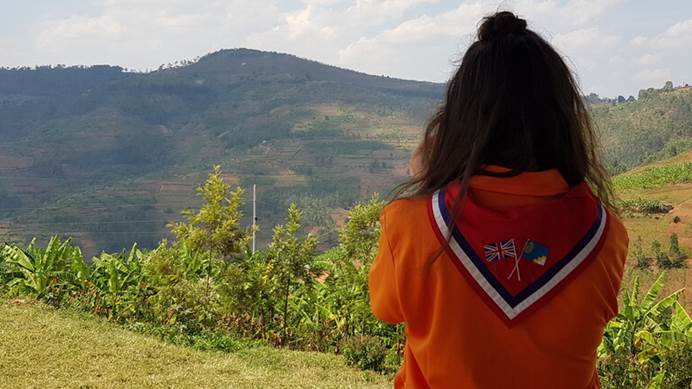Transport
How to organise transport for events and activities
There are several things you need to know when organising transport for members.
If parents transport each others' daughters to guiding events, this is a private agreement between those parents. However, if transport is being arranged by the unit, district etc, there are some important things to consider.
When participants use private or public transport when taking part in guiding activities, the leader must:
- Ensure the transport used is suitable for the purpose.
- Comply with legal requirements, including the wearing of seat belts, use of booster seats and cushions as appropriate, and not exceed the normal seating capacity of the vehicle.
- Make all participants aware of these requirements.
Vehicles used to transport participants for a guiding activity must be correctly licensed for carrying passengers. The only exception is a vehicle used in a carnival or fete, where permission must be given by the appropriate commissioner. If flatbed lorries are used, Rainbows and Brownies must remain seated throughout the parade.
The Highway Code for road users and pedestrians, as appropriate, must be followed at all times.
Remember that hitch-hiking is a Girlguiding prohibited activity.
If you need to transport your unit, it's often a good idea to hire a coach, bus or minibus as these often come with a driver. However, you may want to drive the vehicle yourself.
Coaches and large buses
To drive a bus designed to carry more than 16 passengers, you need a large bus permit.
You can get further information about the large bus permit and driver qualifications for large buses from the Driver and Vehicle Standards Agency or Community Transport Association.
- There must be at least one adult in addition to the driver travelling in the vehicle. The leader must ensure that the appropriate ratio of adults to children is maintained throughout the journey.
- For long journeys, the leadership team should discuss with the driver how many hours they're prepared to drive, where breaks can be taken and if a second driver is needed.
- A contingency plan should be in place in case the journey is delayed due to traffic, weather or other reasons.
- Drivers must follow the rules of the current Road Traffic Act and Highway Code and must not drive for continuous long periods, when tired, in extreme weather, when above the legal alcohol level or if on medication with side effects that impair driving.
- Every passenger must have their own seat.
- Seat belts must be fitted to all coach seats and worn by all passengers.
Minibuses and small buses
To drive a small bus or minibus designed to carry 9 to 16 passengers, you need a small bus permit. If passengers are contributing to the cost of the journey - even indirectly - then a small bus permit is required.
- The small bus permit is issued to a permit holder, for example a unit.
- The permit covers any single minibus used by the permit holder.
- If more than one minibus is used at any one time, then an additional permit is required for each extra vehicle.
- The permit must be displayed within the vehicle when it’s in use so it’s clearly visible from the outside.
- Other organisations, such as The Scout Association, who use the vehicle will need their own small bus permit.
Girlguiding is authorised by the Department for Transport to issue small bus permits, and these can be obtained from the information team on 0161 941 2237 or [email protected]. Permits are also available from the Driver and Vehicle Standards Agency.
Permits are valid for five years. Applications for permits should be made to the Information team at least four weeks before they’re required.
There must be at least one adult in addition to the driver travelling in the vehicle. The leader must ensure that the appropriate ratio of adults to children is maintained throughout the journey.
For long journeys, the leadership team should discuss with the driver how many hours they're prepared to drive, where breaks can be taken and if a second driver is needed.
Every passenger must have their own seat.
Seat belts must be fitted to all minibus seats and worn by all passengers.
Children aged 16 or under travelling in a minibus must sit in forward-facing seats fitted to the vehicle in accordance with the manufacturer’s instructions. Using rear- and side-facing seats is prohibited.
In all cases, the driver must:
- Be over 21 and under 70 years old (unless you meet the ‘Group 2’ medical standards).
- Be driving on a voluntary basis and not for payment.
- Have held a full UK driving licence for at least three years.
- Have no more than three current penalty points on their licence.
You can drive a minibus using a full UK Car Driving Licence if:
- The vehicle can carry between 9 and 16 passengers.
- The maximum weight of the minibus isn’t more than 3.5 tonnes, or 4.25 tonnes including specialist equipment for disabled passengers, such as a wheelchair ramp.
If the minibus is heavier than this, the driver will need to pass a recognised minibus driving course and gain the D1 category on their Driving Licence.
However, if the driver gained a full UK Car Driving Licence before 1 January 1997, the D1 category will already be included on the licence. This person can drive all vehicles with up to 16 passenger seats.
The driver must ensure that the vehicle:
- Displays a valid Small Bus Permit
- Is roadworthy
If towing a trailer, the driver must have either:
- Gained a full driver’s licence before 1 January 1997.
- Completed further training and assessment in towing.
Further information about minibus driving can be found on the GOV.UK website.
Booster seats and child restraints
Organisers of trips or residentials using their own cars as transport and encouraging parents to share transport, should be aware that all children up to 135cm tall (around 4'5"), or the age of 12, whichever comes first, must travel in the correct child restraint. Visit the GOV.UK website for further information.
Leaders transporting girls to an event aren't expected to purchase booster seats or cushions – this is the responsibility of parents.
Leaders, helpers and parents collecting or taking home unit members in their own cars because their normal transport is unexpectedly not available don't require booster seats or cushions as this is ‘an occasional journey over a short distance’. This doesn't apply to journeys which are planned in advance.
Using your own vehicle for Girlguiding volunteering and activities
If you drive a private car, insurance cover for volunteering is likely to be included under your private motor policy - check it before using your own vehicle for Girlguiding volunteering.
If the vehicle is provided by your employer, or your spouse or partner’s employer, you should check with the employer that you're authorised to drive the vehicle for guiding or other volunteer work.
Please remember, compliance with current legislation is your responsibility.
Accidents with vehicles fall under the Road Traffic Act, so any claims would be made through the driver's own motor insurance. Motor insurance is compulsory in the UK.
More details can be found on the vehicle insurance page.
Leaders can transport girls in their own cars, but it's best practice for volunteers to avoid situations where they're alone with a young member. Please see Girlguiding's safeguarding policy for more information.
Hiring or borrowing a vehicle from another organisation
When hiring or borrowing a vehicle from a school or other organisation, it's the driver’s legal responsibility to check the roadworthiness of the vehicle.
Driving abroad
The leader should be satisfied that those responsible for driving are aware of the laws for road use in the countries being visited and have the correct documentation and emergency equipment required.
Information about international licence requirements and driving regulations are available from motoring organisations such as the AA or RAC.
Make sure your vehicle is insured
Read more about how to make sure you have the right vehicle insurance.




